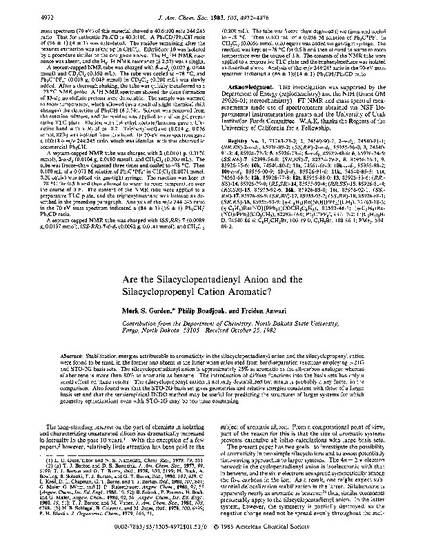
Stabilization energies attributable to aromaticity in the silacyclopentadienyl anion and the silacyclopropenyl cation were found to be small in the former and absent in the latter when calculated from bond-separation reactions employing 3-21G and ST0-2G basis sets. The silacyclopentadienyl anion is approximately 25% as aromatic as the all-carbon analogue whereas silabenzene is more than 80% as aromatic as benzene. The introduction of diffuse functions into the basis sets has only a small effect on these results. The silacyclopropenyl cation is actually destabilized but strain is probably a key factor in the comparison. Also found was that the ST0-2G basis set gives geometries and relative energies consistent with those of a larger basis set and that the semiempirical INDO method may be useful for predicting the structures of larger systems for which geometry optimizations even with ST0-2G may be too time consuming.
Available at: http://works.bepress.com/mark_gordon/34/
